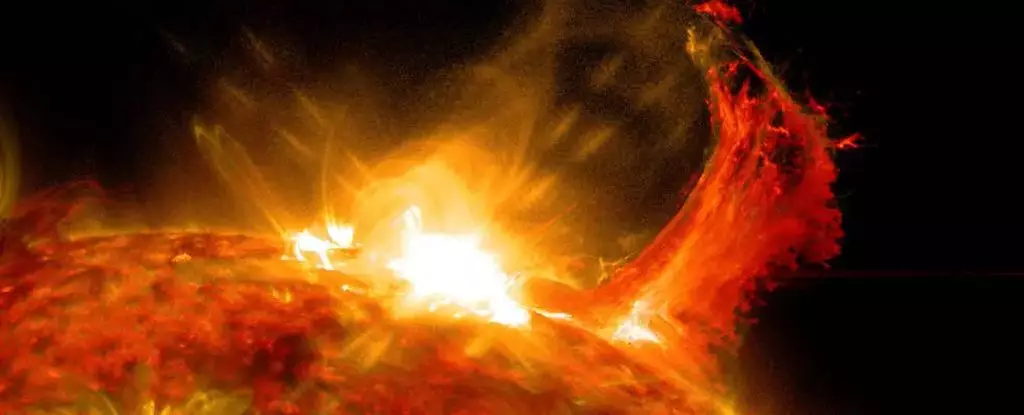The Sun, often perceived as a constant in our skies, is an intricate and dynamic star whose unpredictable behavior presents significant challenges for solar physicists. Rather than being a fixed entity, the Sun is a volatile sphere of plasma characterized by electrically charged gases, constantly influenced by its magnetic field. This complexity manifests in dramatic phenomena, such as coronal mass ejections (CMEs), which can have substantial implications for life on Earth. Understanding and predicting these solar eruptions is vital, and recent advancements in machine learning technology are paving new avenues for forecasting their consequences with higher precision than ever before.
The Sun is not only a source of light and warmth but also a dynamic system that experiences violent eruptions. CMEs, massive expulsions of plasma from the solar atmosphere, can occur due to sudden shifts in solar magnetic fields. Depending on their speed and direction, they can reach Earth in a matter of days, interacting with our planet’s own magnetic field. This interaction is capable of inducing geomagnetic storms, which can disrupt satellite communications, GPS systems, and even electrical grids. Moreover, these solar events can provoke stunning auroras, painting the night sky with vibrant colors. The duality of beauty and danger inherent in solar activity underscores the importance of accurate forecasting.
Historically, predicting solar activity has proven to be a daunting task for scientists. Traditional methods often lack the nuance required to interpret the vast data collected over time. This is where machine learning comes into play. By employing sophisticated algorithms trained on historical solar data, scientists can identify patterns and correlations that would otherwise remain unseen. These algorithms serve as a powerful tool in anticipating the occurrence of solar flares and CMEs, thus enabling better preparedness for the potential impacts on Earth.
A notable study led by Sabrina Guastavino from the University of Genoa exemplifies the successful application of AI in solar activity prediction. The research team utilized machine learning techniques to analyze data from decades of solar observations, particularly focusing on the solar storm of May 2024. This event featured a multitude of significant solar occurrences, including a massive flare classified as an X8.7. By leveraging artificial intelligence, the researchers aimed to predict solar flare occurrences, their evolution, and the subsequent production of CMEs, ultimately offering forecasts for geomagnetic storms.
The results were exceptional, indicating a degree of accuracy previously unattainable by conventional prediction methods. The study demonstrated that machine learning significantly reduces uncertainties in forecasting solar events, particularly in estimating the travel times of CMEs to Earth and predicting their associated geomagnetic storms. This advancement in predictive capability is monumental—it enables us to better prepare for the effects of solar activity on our technology-laden society.
The implications of these machine-learning advancements extend far beyond academic curiosity. As we increasingly rely on technology that can be disrupted by solar storms—ranging from power grids to navigation systems—the ability to forecast solar activity with high accuracy becomes critical. An informed approach to managing the risks associated with CMEs can mitigate potential damage, safeguarding our technological infrastructure and daily activities.
Furthermore, for amateur astronomers and enthusiasts, improved predictions around auroral activity could enrich the experience of skywatching, providing more opportunities to witness stunning natural displays.
The intersection of solar physics and machine learning marks a transformative period in our approach to understanding the Sun’s unpredictable nature. As algorithms continue to evolve and improve, we stand on the brink of a new era where the awe-inspiring phenomena of the cosmos can be anticipated with a level of precision that enhances both our scientific understanding and our day-to-day lives.


Leave a Reply